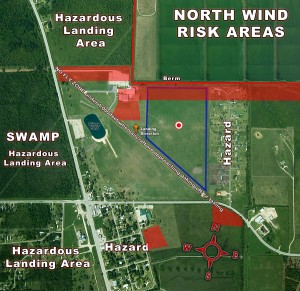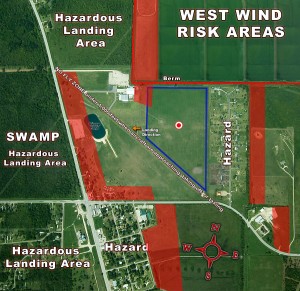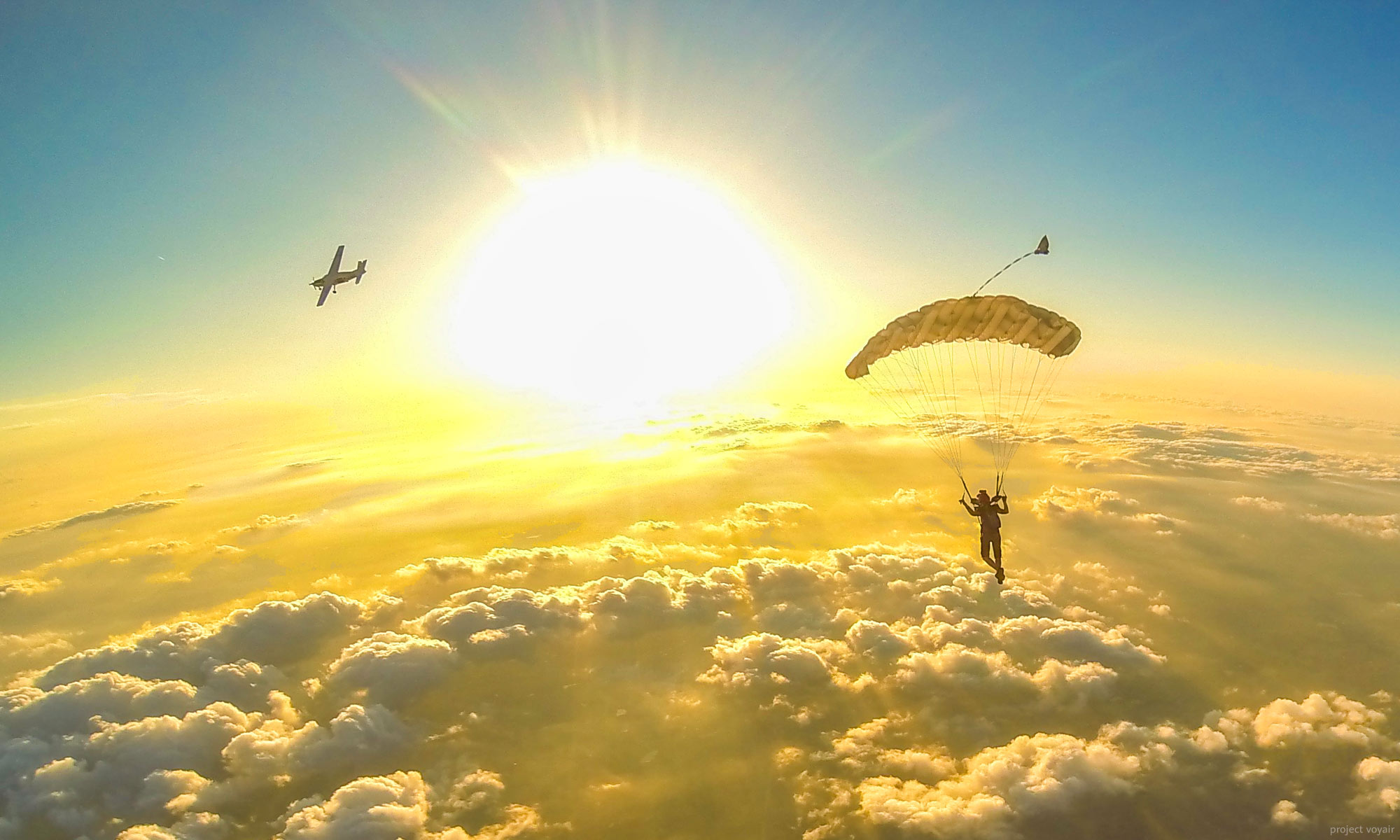It is bumpy up there!
Turbulence is the Rodney Dangerfield of skydiving…. It doesn’t get respect. Turbulence is a challenge for jumpers for at least two reasons: It is invisible and unpredictable.
Because turbulence is invisible, we must actively anticipate where it may be. Most new jumpers (and a lot of more experienced ones) vastly underestimate the danger zone for mechanical turbulence around obstacles. We can expect turbulence in front of, over, beside, and 10-20 times the height of the obstacle downwind. At Spaceland, turbulence in the primary landing areas most often occurs south of the berm and hangar in a north wind and east/southeast of the hangar in a west wind.
Because turbulence is unpredictable, it is easy to be lulled into an unwarranted sense of safety. If ten jumpers on one load fly through the same cube of potentially turbulent air in a 90-second period, four may experience nothing at all, five may get “bumped around”, and one may have a partial canopy collapse. It is therefore critical that we be wary of areas where turbulence is likely even if turbulence has not yet caused trouble there today.
Many jumpers have experienced turbulence only as “bumpiness” under canopy. That is certainly the most common manifestation of turbulence. However, bumpiness is not the only consequence of flying through turbulence. Turbulence can create unstable landing conditions. These unstable conditions can result in the canopy moving suddenly in unexpected ways or even collapsing very close to the ground. This has injured or killed jumpers. Canopies are fabric wings that are vulnerable to collapse. When turbulence collapses a canopy it typically does so suddenly and close to the ground. Fortunately, most collapses are only partial, and re-inflate promptly. Occasionally, a canopy will not recover in time for a safe landing.
Varying appreciation of the risk of turbulence plays a part in the varying wind speed limits among jumpers. Often because the new jumper has not seen or experienced the dangerous consequences of turbulence, he or she discounts it as just “bumpiness” and not a reason to stay on the ground. This was certainly true for me as a new jumper. I traveled to a temporary drop zone set up for spring break. The appeal of this DZ was the promise of beach landings. Unfortunately, after arrival, we discovered that the DZO had not done the FAA paperwork right, and beach jumps were not allowed. The alternate DZ was near the beach, but it was surrounded by turbulence-generating buildings on three sides. I made three jumps there in turbulence before I decided to come home. A few days later a jumper with more than 10,000 jumps died at that DZ due to a canopy collapse (The fire department recovered his body from the attic of the condo that he landed on). That incident forever changed my personal appreciation of the risks that turbulence poses.
The smartest way to deal with turbulence is to avoid it. Learn to predict turbulence, watch other canopies for evidence of turbulence, and be willing to stay on the ground when conditions are risky for turbulence.
Scroll down for maps of turbulence risk areas at Skydive Spaceland based on different wind directions–but keep in mind that turbulence can also occur in other areas for reasons you might not expect (such as the wake turbulence from a jumper who landed shortly before you).
The linked article is EXCELLENT. I highly encourage all jumpers to read it (or read it AGAIN): http://www.performancedesigns.com/docs/Turbulence-Hazard.pdf
Reprinted with permission from Jim McGraw
Skydive Spaceland-Houston Turbulence Risk Areas





